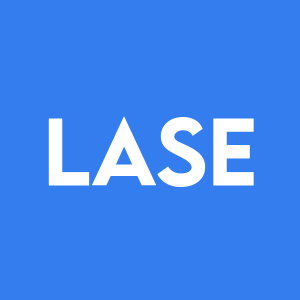Laser Photonics Propels R&D Efforts in PCB Depaneling
Laser processing has emerged as an effective method of PCB depaneling due to its non-contact nature, narrow kerf width, and precision. This method eliminates part-induced stress and the need for consumables like cutting oils, ensuring cleanliness and high-quality results.
Custom-tailored depaneling laser technology by CMS Laser features high speed, pinpoint accuracy and machine vision alignment. The company offers PCB depaneling systems integrating CO2 and UV laser types. The main deciding factor when determining which laser to use is the relative importance of cycle time versus the cleanliness of the cut edge. CO2 lasers provide fast cuts and cost efficiency, while UV lasers offer clean cuts with minimal charring.
“By bringing together the talented engineers and technicians of Control Micro Systems and Laser Photonics, we plan to boost the development of PCB depaneling systems to meet the growing demand in the market,” said John Armstrong, Executive Vice President of LPC.
Many manufacturers have chosen laser routing as it’s ideal for flexible, highly sensitive, small PCBs used across electronic devices. CMS Laser’s solutions offer precision and efficiency suitable for standalone or integrated SMT line operations.
CMS Laser’s Class I PCB depaneling systems feature Through the Optics Vision (TTOV) for precise processing and data verification and include CMS Process Engine software, offering a user-friendly interface and optional production line communication. Easy setup and quick changeovers ensure high throughput with excellent accuracy and repeatability, delivering high yield and customer value.
Leveraging CMS Laser’s specialized expertise, LPC is channeling resources into R&D in the PCB manufacturing area, aligning with its comprehensive diversification strategy. This move aims to enhance shareholder value and build resilience in evolving markets. For more information, visit the LPC website at www.laserphotonics.com.
About Laser Photonics Corporation
Laser Photonics is a vertically integrated manufacturer and R&D Center of Excellence for industrial laser technologies and systems. Laser Photonics seeks to disrupt the
About CMS Laser
Control Micro Systems (CMS Laser), is a 40-year
Cautionary Note Concerning Forward-Looking Statements
This press release contains “forward-looking statements” (within the meaning of Section 27A of the Securities Act of 1933, as amended, and Section 21E of the Securities Exchange Act of 1934, as amended), including statements regarding the Company’s plans, prospects, potential results and use of proceeds. These statements are based on current expectations as of the date of this press release and involve a number of risks and uncertainties, which may cause results and uses of proceeds to differ materially from those indicated by these forward-looking statements. These risks include, without limitation, those described under the caption “Risk Factors” in the Registration Statement. Any reader of this press release is cautioned not to place undue reliance on these forward-looking statements, which speak only as of the date of this press release. The Company undertakes no obligation to revise or update any forward-looking statements to reflect events or circumstances after the date of this press release except as required by applicable laws or regulations.
View source version on businesswire.com: https://www.businesswire.com/news/home/20241231919271/en/
Investor Relations Contact:
laser@haydenir.com
Media Contact:
Karla Kizzort
Laser Photonics Corporation
kkizzort@laserphotonics.com
Source: Laser Photonics Corporation








